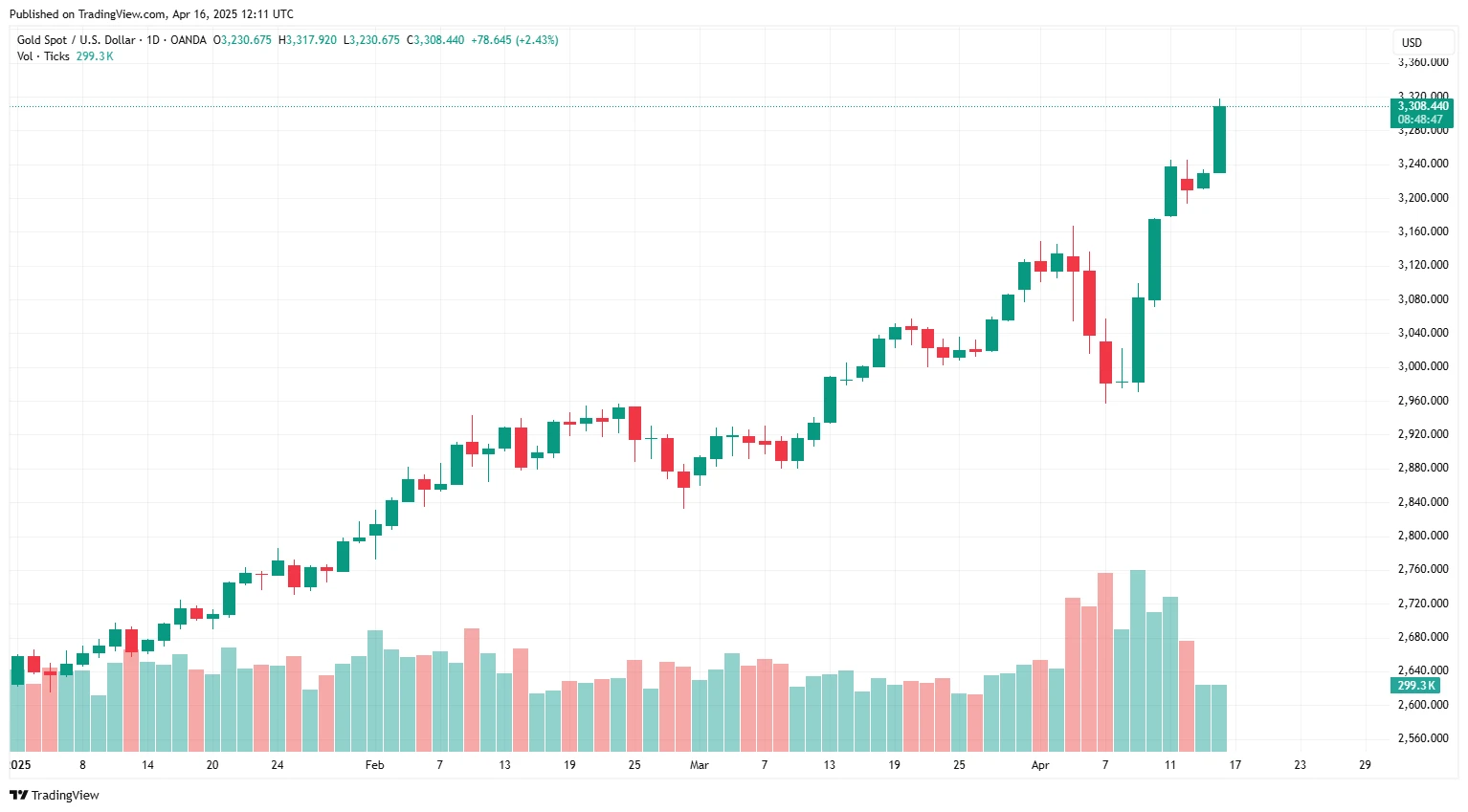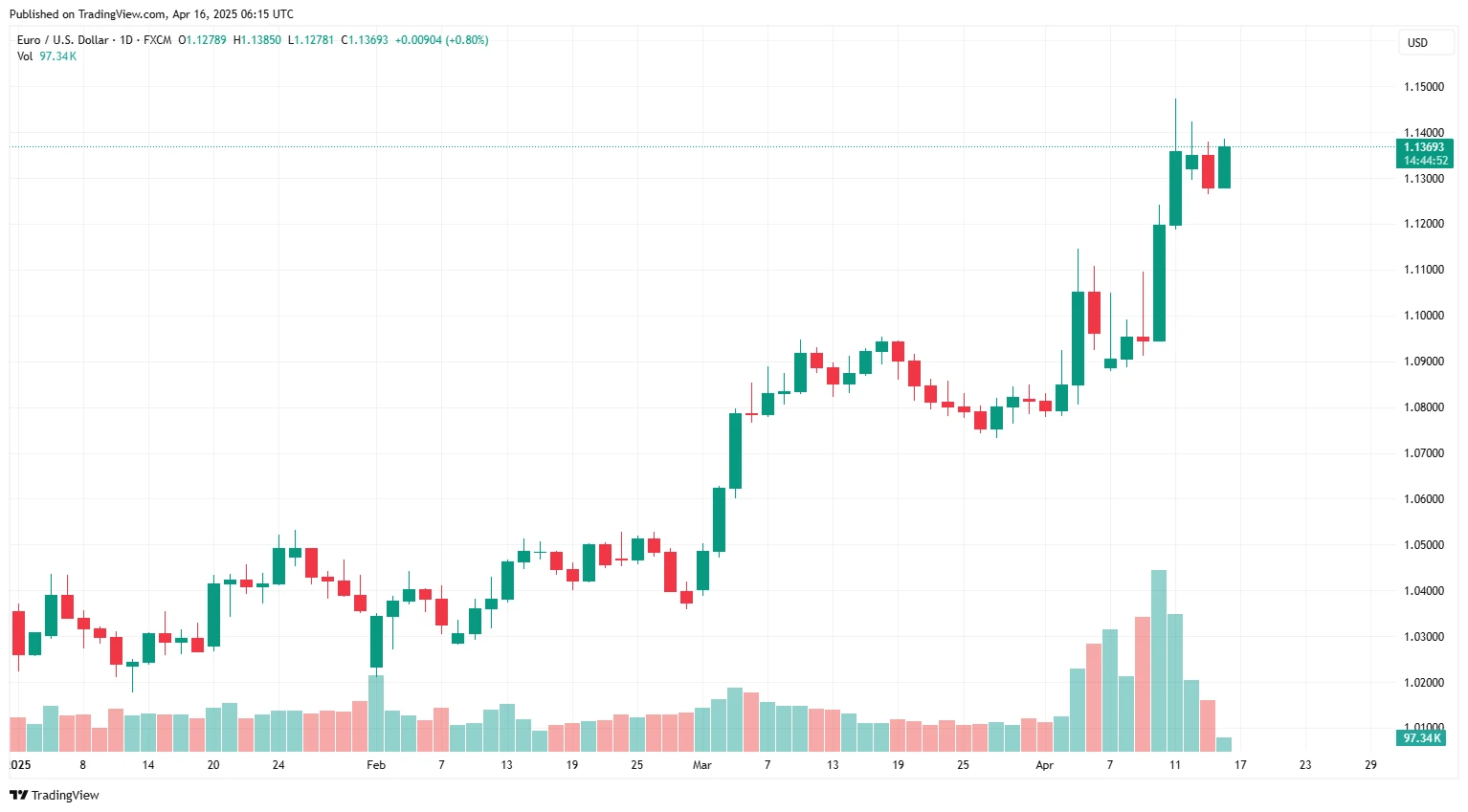Weakened dollar boosts gold demand, pushing prices to new highs amid tariff standoff
 File photo shows a U.S. dollar bill and a ounce gold bar placed side by side, accessed on Mar. 28, 2025. (Adobe Stock Photo)
File photo shows a U.S. dollar bill and a ounce gold bar placed side by side, accessed on Mar. 28, 2025. (Adobe Stock Photo)
Gold prices climbed to new all-time highs on Wednesday amid the U.S. dollar’s continued decline, driven by ongoing tariff tensions between the U.S. and China.
Chip titan Nvidia’s warning of sharp losses exceeding $5.5 billion also triggered additional demand for gold, signaling a potentially severe contraction in the global tech industry—a key growth engine for both Asian and U.S. economies.
As of 8:20 a.m. GMT on Wednesday, gold prices per ounce were hovering around $3,312.60, with a daily gain of over 2.6%. Thus, year-to-date gains surpassed 26%, or approximately $650.

Gold benefited from persistent safe-haven demand as investors grew increasingly uneasy over U.S. President Donald Trump’s plans to impose additional trade tariffs. This trend has continued since his election in November and has accelerated since he assumed office. Reciprocal tariffs were unveiled on April 2, imposing additional levies on imports from 185 countries, ranging between 10% and 50%, depending on each country’s bilateral trade deficit with the U.S.
However, as China firmly retaliated against Trump’s tariffs and vowed to fight to the end by introducing counter-tariff hikes, Trump delayed the tariffs above 10% for 90 days for the affected countries and responded to China’s countermeasures. This tit-for-tat exchange resulted in U.S. tariffs on Chinese products reaching 145%, while China raised its own tariffs to 125% on imports from the U.S.

In this sight, several prominent international investment banks have raised their year-end gold price forecasts. Australia’s ANZ Bank increased its target to $3,600 per ounce and updated its six-month projection to $3,500, citing a rise in central bank demand for gold as the global flight to safe-haven assets intensifies.
U.S.-based Goldman Sachs also revised its outlook on Monday, raising its 2025 year-end gold price forecast from $3,300 to $3,700 per ounce, and projected a trading range of $3,650–$3,950.
Last week, Swiss banking giant UBS also lifted its 2025 gold forecast, raising its previous estimate from $3,200 to $3,500 per ounce.
Euro continues to strengthen versus US dollar
Although Trump temporarily exempted electronic products from these tariffs last week, earlier this week, he stated that “no one is off the hook,” adding that he is considering applying separate tariffs on electronic imports and may soon announce similar measures for the pharmaceutical sector.
This situation left markets uncertain over the U.S. president’s future tariff plans, increasing investor demand for safe-haven assets such as gold and the euro, while accelerating outflows from the U.S. dollar. The U.S. dollar index fell back below the 100 mark, hovering around 99.5 at the same time. Meanwhile, the euro/U.S. dollar exchange rate edged up 0.78% to 1.1368, with year-to-date gains nearing 10%.

The euro’s recent gains can be attributed not only to safe-haven flows but also to growing geopolitical uncertainty surrounding U.S. trade policy and a broader realignment in global capital preferences.
The euro, representing the world’s second-largest reserve currency, benefits in this context as a geopolitical counterweight to the dollar. Additionally, the European Union’s more stable trade posture and multilateral approach amid rising U.S.-China tensions have made the euro relatively more attractive to investors seeking shelter from volatility.



